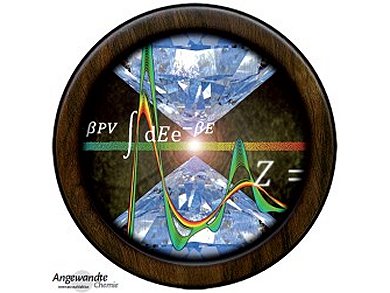In this issue, C. N. R. Rao et al. review graphene analogues of inorganic layered materials, such as MoS2 and BN. How are they synthesized and what are their physical properties and applications? In a further Review, L.-J. Wan et al. shed new light on the electrochemistry, materials, and prospects of lithium–sulfur batteries. How can high energy densities be achieved? In a Minireview, Y.-T. Long et al. discuss mimicking natural ion channels with biological and solid-state nanopores for the detection and sequencing of DNA. The Highlights deal with the importance of size in catalysis with nanosized homogeneous gold (R. Gramage-Doria and J. N. H. Reek) and diastereodivergent dual synthesis (N. Maulide et al.). In an Editorial, W. T. S. Huck reflects on moving countries and changing subjects.
In the Communications section, P. Schwerdtfeger et al. challenge high-pressure experiments with ab initio simulations of superheated argon crystals (see picture). M. Klussmann et al. report synergistic effects of ketones and hydroperoxide in oxidative couplings. W. Cai et al. succeeded in a chelator-free synthesis of a dual-modality PET/MRI agent for cancer diagnosis. M. Tomás et al. investigated the H/D exchange on mobile and immobile water in non-porous, channel-free crystals of a coordination polymer.

